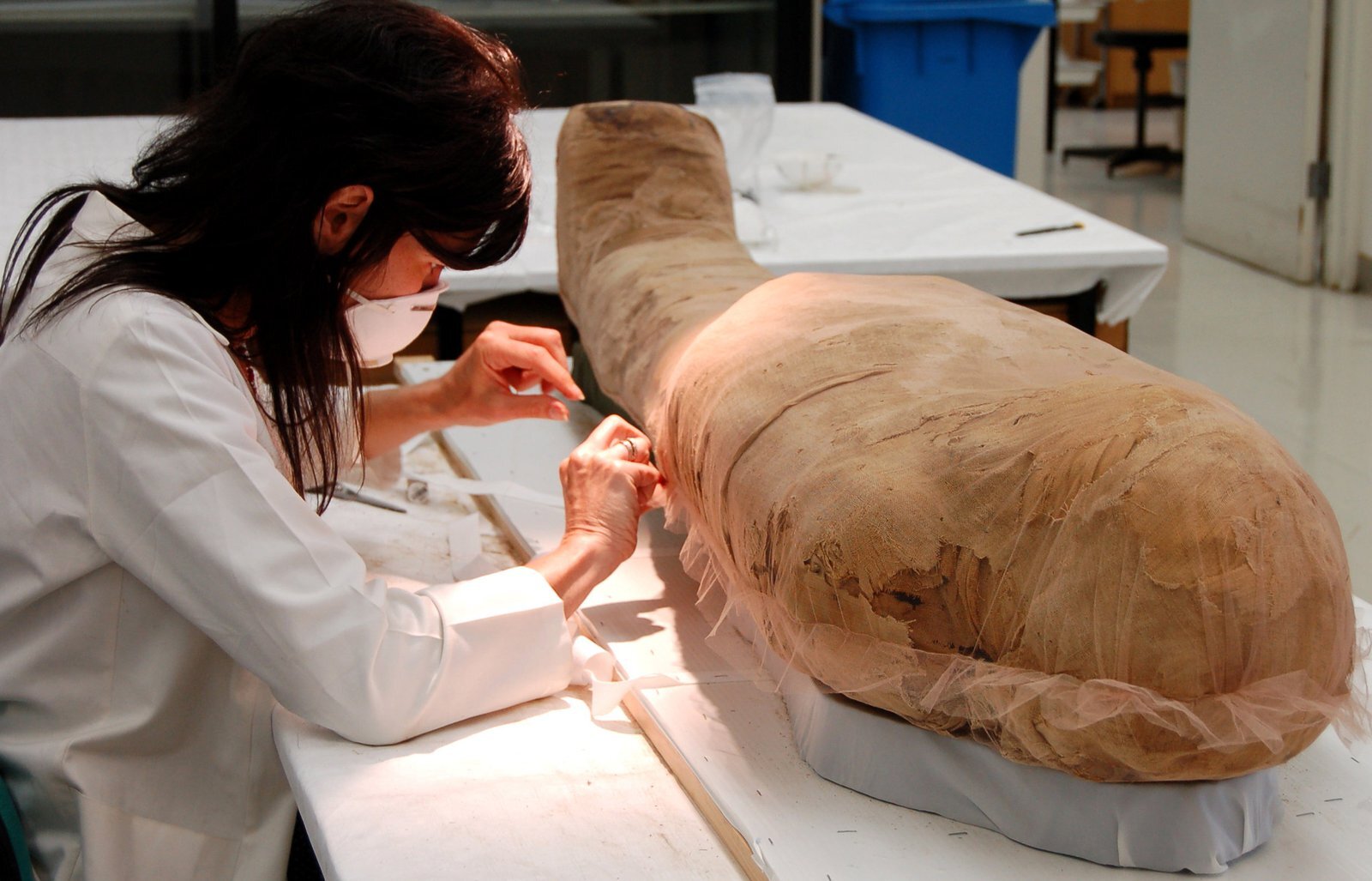
Ever wondered what makes Egyptian mummies so fascinating? These ancient wonders hold secrets of a civilization that thrived thousands of years ago. Mummification wasn't just about preserving bodies; it was a spiritual journey to the afterlife. The process involved removing internal organs, drying the body with natron, and wrapping it in linen. Did you know that even pets were mummified? Cats, dogs, and even birds were prepared for the afterlife alongside their owners. Mummies weren't just for royalty; commoners could also be mummified if they could afford it. Ready to unravel more intriguing facts about these ancient marvels?
The Origins of Egyptian Mummies
Ancient Egypt is famous for its mummies. These preserved bodies give us a glimpse into the past. Let's explore some fascinating facts about them.
- The word "mummy" comes from the Arabic word "mummiya," meaning bitumen, a substance used in the embalming process.
- Mummification began around 2600 BCE during the Fourth and Fifth Dynasties.
- Egyptians believed preserving the body was essential for the soul's journey in the afterlife.
- The earliest mummies were naturally preserved in the hot, dry desert sand.
- Over time, Egyptians developed complex embalming techniques to improve preservation.
The Mummification Process
Creating a mummy was a detailed process. It involved many steps to ensure the body remained intact for eternity.
- The process took about 70 days to complete.
- First, embalmers removed the internal organs, except the heart, which they believed was the seat of the soul.
- The brain was extracted through the nose using a hooked instrument.
- Organs were placed in canopic jars, each protected by a different deity.
- The body was then dehydrated using natron, a type of salt.
- After 40 days, the body was washed and wrapped in linen strips.
- Amulets and charms were placed between the layers of linen for protection.
The Role of Religion in Mummification
Religion played a crucial role in the mummification process. Egyptians believed in an afterlife where the dead would live forever.
- The god Anubis, depicted with a jackal head, was the deity of mummification and the afterlife.
- Priests performed rituals and prayers during the embalming process to ensure safe passage to the afterlife.
- The "Opening of the Mouth" ceremony was conducted to restore the deceased's senses in the afterlife.
- The Book of the Dead, a collection of spells and prayers, was often buried with the mummy to guide them through the afterlife.
Famous Egyptian Mummies
Some mummies have become famous due to their historical significance or the mysteries surrounding them.
- King Tutankhamun, also known as King Tut, is one of the most famous mummies. His tomb was discovered in 1922 by Howard Carter.
- Ramses II, also known as Ramses the Great, was one of Egypt's most powerful pharaohs. His mummy is well-preserved and displayed in the Egyptian Museum in Cairo.
- The mummy of Queen Hatshepsut, one of Egypt's few female pharaohs, was identified in 2007 using DNA analysis.
- The "Screaming Mummy" is a mysterious mummy found with a contorted face, suggesting a violent death or a curse.
Modern Discoveries and Research
Advancements in technology have allowed researchers to learn more about mummies without damaging them.
- CT scans and X-rays help scientists study mummies' internal structures and health conditions.
- DNA analysis has provided insights into the lineage and diseases of ancient Egyptians.
- In 2018, researchers discovered a new tomb in Luxor containing over 50 mummies, shedding light on burial practices.
- The study of mummies has revealed information about ancient Egyptian diets, including evidence of parasitic infections and dental issues.
Cultural Impact of Mummies
Mummies have fascinated people for centuries and have influenced various aspects of modern culture.
- The discovery of King Tut's tomb sparked a global interest in Egyptology and ancient Egyptian culture.
- Mummies have inspired numerous books, movies, and TV shows, such as "The Mummy" franchise.
- The concept of mummies coming back to life has become a popular theme in horror fiction.
- Museums worldwide display mummies, attracting millions of visitors and promoting interest in ancient history.
The Timeless Allure of Egyptian Mummies
Egyptian mummies continue to fascinate us with their mysteries and ancient practices. From the intricate mummification process to the beliefs surrounding the afterlife, these preserved bodies offer a glimpse into a civilization that thrived thousands of years ago. Mummies aren't just relics; they're storytellers, revealing secrets about health, diet, and daily life in ancient Egypt.
Modern technology has allowed us to uncover even more about these ancient wonders, from DNA analysis to CT scans. Each discovery adds another layer to our understanding, making mummies an endless source of intrigue. Whether you're a history buff or just curious, the legacy of Egyptian mummies is a testament to human ingenuity and the desire to preserve life beyond death. Keep exploring, and who knows what other secrets these ancient guardians might reveal.
Was this page helpful?
Our commitment to delivering trustworthy and engaging content is at the heart of what we do. Each fact on our site is contributed by real users like you, bringing a wealth of diverse insights and information. To ensure the highest standards of accuracy and reliability, our dedicated editors meticulously review each submission. This process guarantees that the facts we share are not only fascinating but also credible. Trust in our commitment to quality and authenticity as you explore and learn with us.


